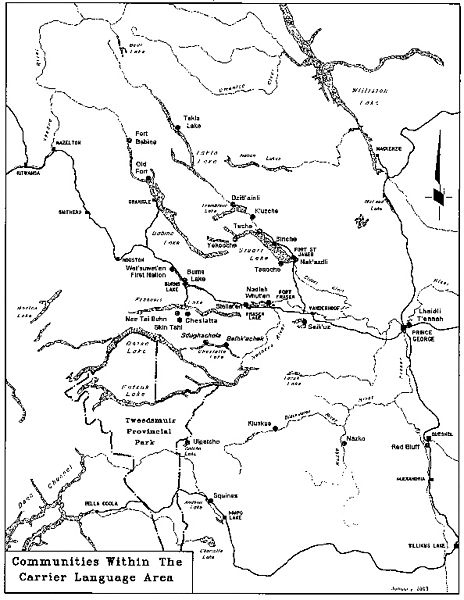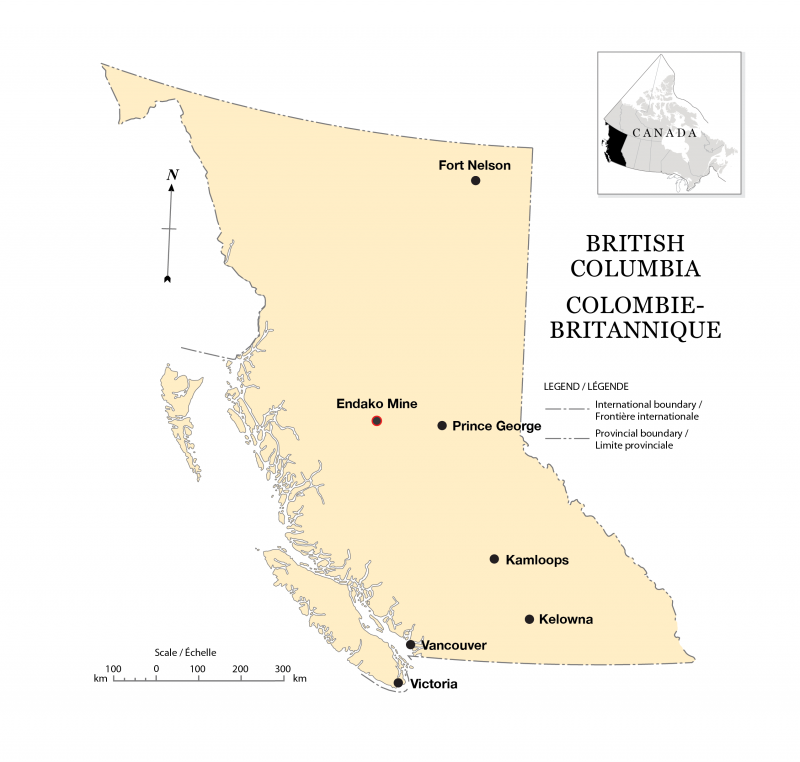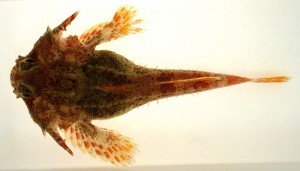4.5: Case Study 2- Carrier Nation and the Endako Mine
- Page ID
- 21984
Mining in BC and First Nations peoples
In BC, mines and potential mines often lie in or are close to the traditional lands of First Nations people. The Province is legally obligated to consult and accommodate First Nations on land and resource decisions that could impact Aboriginal interests.
Mining is a double-edged sword for the Aboriginal people of BC: on the one hand it provides employment and financial gain (when they are granted proper rights, which is not always the case), but on the other it interferes with traditional use of lands and significantly harms the environment to which their culture is inextricably linked.
Although BC mining laws do provide some level of protection for First Nations, the laws still favour industry and do not regulate the protections over First Nations land and rights. First Nations peoples face bureaucracy at every corner in terms of registering claims or addressing issues of exploration, production or closing of mining sites in BC.
Unemployment
Why do First Nations people engage with mining companies despite the fact that they face unjust treatment and bureaucracy? One of the most important reasons is the high unemployment rates in the Aboriginal communities, especially among the youth. Consequently, many Aboriginal people support mining within their land as the industry provides employment and a regular income to many. Since 2001, Aboriginal people have benefited from increased levels of employment in British Columbia due to the economic growth associated with mining, construction and the services linked to these (White, Michalowski, & Cross, 2006).
Skii km Lax Ha, a small band near Hazelton, is an example of an Aboriginal group that has had a positive experience with the location of the mines on its land. However, not all experiences are positive and often the local people suffer as does the environment.
Carrier Nation
The Carrier First Nation, located in the mid-interior of the province, is one group that has not benefited from mining.

Over the last several years there has been considerable increase in mining exploration and activities within the Carrier territory. Both the province of BC and mining companies are investing in inventories and exploration of minerals. Despite the fact that billions of dollars have been made from the mines on their land, the Carrier communities have gained little or no benefit.
Endako Mine
Located West of Fraser Lake in BC, the Endako mine is one of the largest molybdenum mines in North America, with reserves amounting to 448.4 million tonnes of molybdenum ore resulting in 148,000 tonnes of molybdenum. One of the older mines in British Columbia, Endako is owned by US-based Thompson Creek Metals and began operations in 1965. It is a major employer in the area and has recently been expanding its operations.

Local First Nations (Stellate’en, Nadleh Wut’en) have filed lawsuits against Endako Mines for failure to consult on the mine expansion occurring today. Another concern is that consultation did not occur initially in the 1960s when the mine opened, and the courts have refused to acknowledge First Nations rights and title flowing from that time period to today.
Thompson Creek Metals’ recent expansion of its operations to Mount Milligan (halfway between Fort St. James and Mackenzie, just southeast of Fraser Lake), is opposed by some First Nations, but nevertheless the copper-gold mine has been approved. The load out facility will be in Mackenzie and mining is regarded as a new employment asset to the town which is primarily based around logging and lumber.
Environmental Issues
The BC Ministry of Environment has identified that effluent from Endako mines is affecting aquatic environment in Francois Lake, just one of many environmental impacts of the mine to the surrounding area. Although the wastewater discharged from the molybdenum mine does not exceed its permit limits (5.6 million cubic metres a year of seepage and run-off from tailings dams and the mine site, which is enough discharge to fill more than 2,200 Olympic-sized swimming pools a year), monitoring indicates that effluent is affecting the aquatic environment in Francois Lake, the Endako River, and streams originating from the mine site.
Specifically, monitoring by the BC Ministry of Environment indicates that elevated levels of contaminants of concern are reaching Francois Lake and influencing the physiology of the prickly sculpin, normally a bottom-feeding fish. The sculpin is a sentinel species, which can provide advance warning of dangers to the environment. These fish are experiencing reduced reproductive capabilities and enlarged liver sizes due to the toxins.

A BC Ministry of Environment report showed that federal guidelines on BC water-quality guidelines were exceeded at the Sweetnam Creek outlet in Francois Lake, just south of the mine operation at Endako. Sulphate, phosphorus, aluminum and molybdenum were all found in the water.
David Bailey, Director of the Environment for Thompson Creek Metals, has said that the evaluation of the latest monitoring results was preliminary, and that a re-evaluation of its permit limits would be up for discussion as part of an ongoing analysis, including with Environment Canada (Hoekstra, 2014). However, he maintained that the company would only make changes supported by good science.
Moving Forward
Chief Martin Louie of Nadleh Whut’en, says that all First Nations and local residents should be concerned that the Endako Mine being allowed to pollute the environment. The problem, in his opinion, is that the mine is old and is therefore operating using outdated practices and poor standards. The pressure on the local ecosystems is of great concern to him and his people and there is a need for discussion with First Nations leaders, industries and government in order to define cumulative impacts. The issue is ongoing for Endako and the land of the Carrier peoples.
Attributions
- Figure 4.6 Communities within the Carrier language area. By Michelle Loughheed (http://en.Wikipedia.org/wiki/File:CarrierCommunities.jpg) under CC BY-SA 2.5 (http://creativecommons.org/licenses/by-sa/2.5/)
- Figure 4.7 Location of Endako mine by Hilda Anggraeni derived from British Columbia Map from The Atlas of Canada (atlas.nrcan.gc.ca/site/english/maps/reference/outlineprov_terr/bc_outline) used under Open Government Licence (data.gc.ca/eng/open-government-licence-canada).
- Figure 4.8 Area surrounding Endako mine including Endako River and Fraser Lake by Hilda Anggraeni derived from British Columbia Map from The Atlas of Canada (atlas.nrcan.gc.ca/site/english/maps/reference/outlineprov_terr/bc_outline) used under Open Government Licence (data.gc.ca/eng/open-government-licence-canada).
- Figure 4.9 Sculpin fish by Kitty Mecklenburg (http://commons.wikimedia.org/wiki/File:Antlered_Sculpin.jpg) is in the Public Domain

